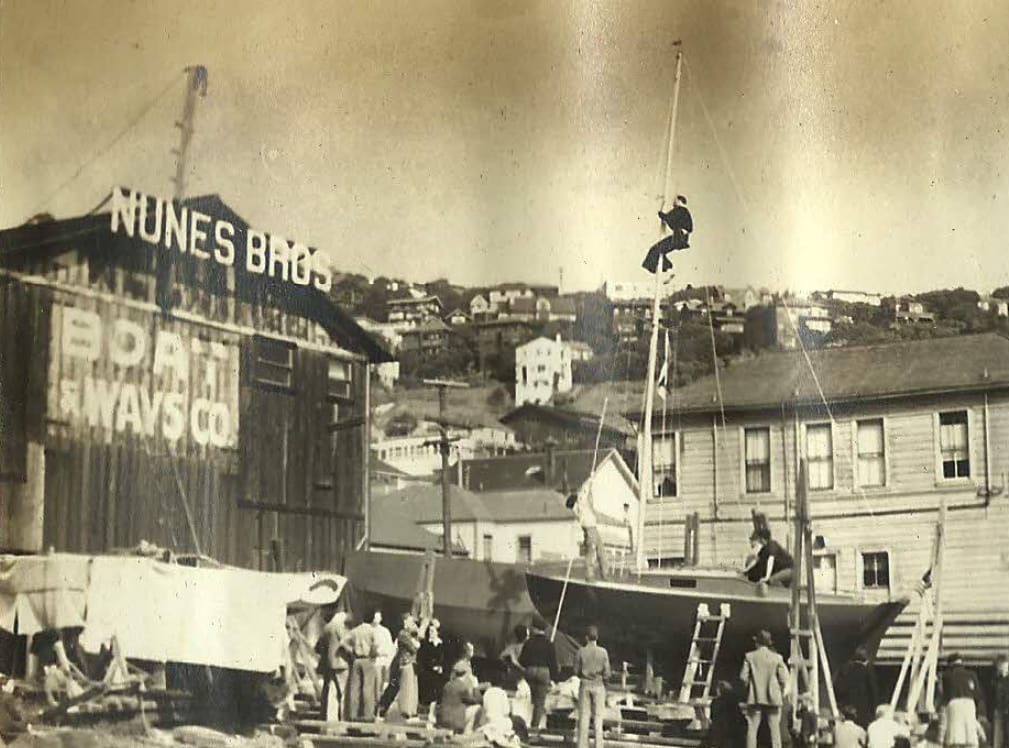About Bear Boats

The Bear Class Sloop, a living piece of San Francisco Bay’s maritime history, was conceived in 1929 by Ernest Nunes and Marty Martinson. The first keel was laid in 1931 by the Nunes Boat and Ways Company in Sausalito, California. By summer 1932, the first boat was ready for sea trial. Onlookers reported that Commodore Cliff Smith of the San Francisco Yacht Club praised the effort, telling young Ernest Nunes, “That is a bear of a boat.” The name stuck, and a unique class indigenous to San Francisco Bay was born.
The next four boats were built from a second model, which included improvements from the first design. A building jig was also constructed to facilitate framing. After the first five boats were built, Nunes and Martinson, with help from the owners, decided to form a class and join the Yacht Racing Association (YRA) of the Bay. To meet membership conditions, the boats were retrofitted with self-bailing cockpits, and the Bear Class was officially recognized as a one-design sailing class.

However, growth was slow. By 1937, only two more Bears had been built or were under construction. The first owners lost interest in racing, and some boats were converted to cruisers, some featuring inboard power. By 1936, the class lost its official status with the YRA, and only a couple of the boats continued racing.
In the late 1930s, members of the Richmond Yacht Club revived interest in the Bear Class. In 1938, more than a dozen home builders began constructing new hulls, with keel ballast costs around $100 and additional fees for plans, keel mold use, and royalties. The YRA then reconsidered reinstating the Bear Class as an active one-design class.

In 1939, the World’s Fair opening at Treasure Island included YRA racing. The Bear Class needed to qualify five boats to regain one-design status. A last-minute launch of a new boat and a dramatic race led to the Bear Class’s reinstatement.
By the late 1950s, the Bear Class was the largest one-design class on San Francisco Bay, with competitive racing continuing through the 1960s. The class was homegrown, with both professional and amateur builders contributing to the fleet. However, as both the boats and their sailors aged, the class grew quiet.
In the 2010s, a group of dedicated Bear Boat owners rekindled interest in these charming yachts. The focus was on getting the boats out in sufficient numbers to sail, race, and reinvigorate the Bear Boat Association. The 100th anniversary of the Bear Class in 2032 is a significant milestone, and the Association continues striving to expand and energize the community of sailors who love these resilient and enjoyable boats.
